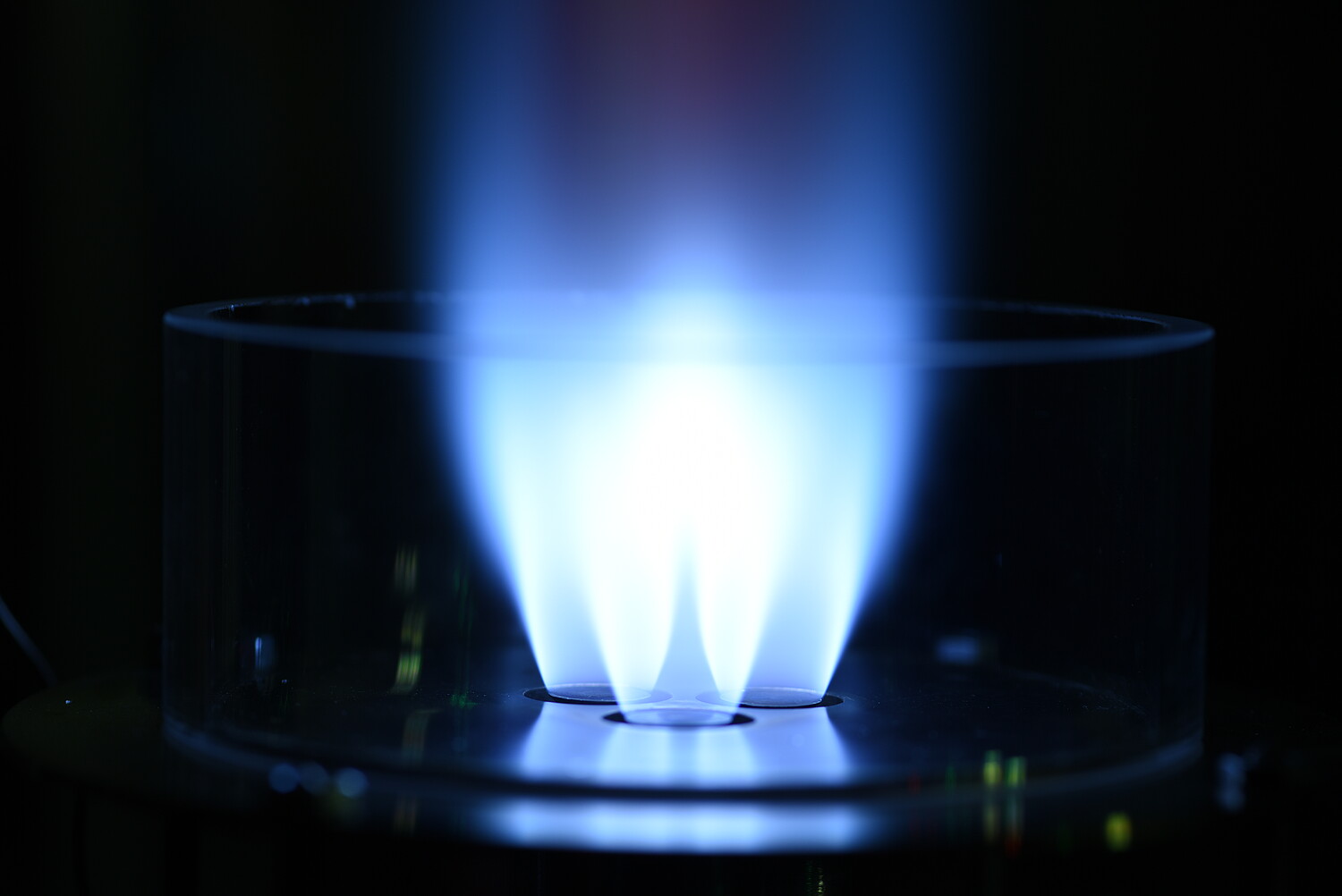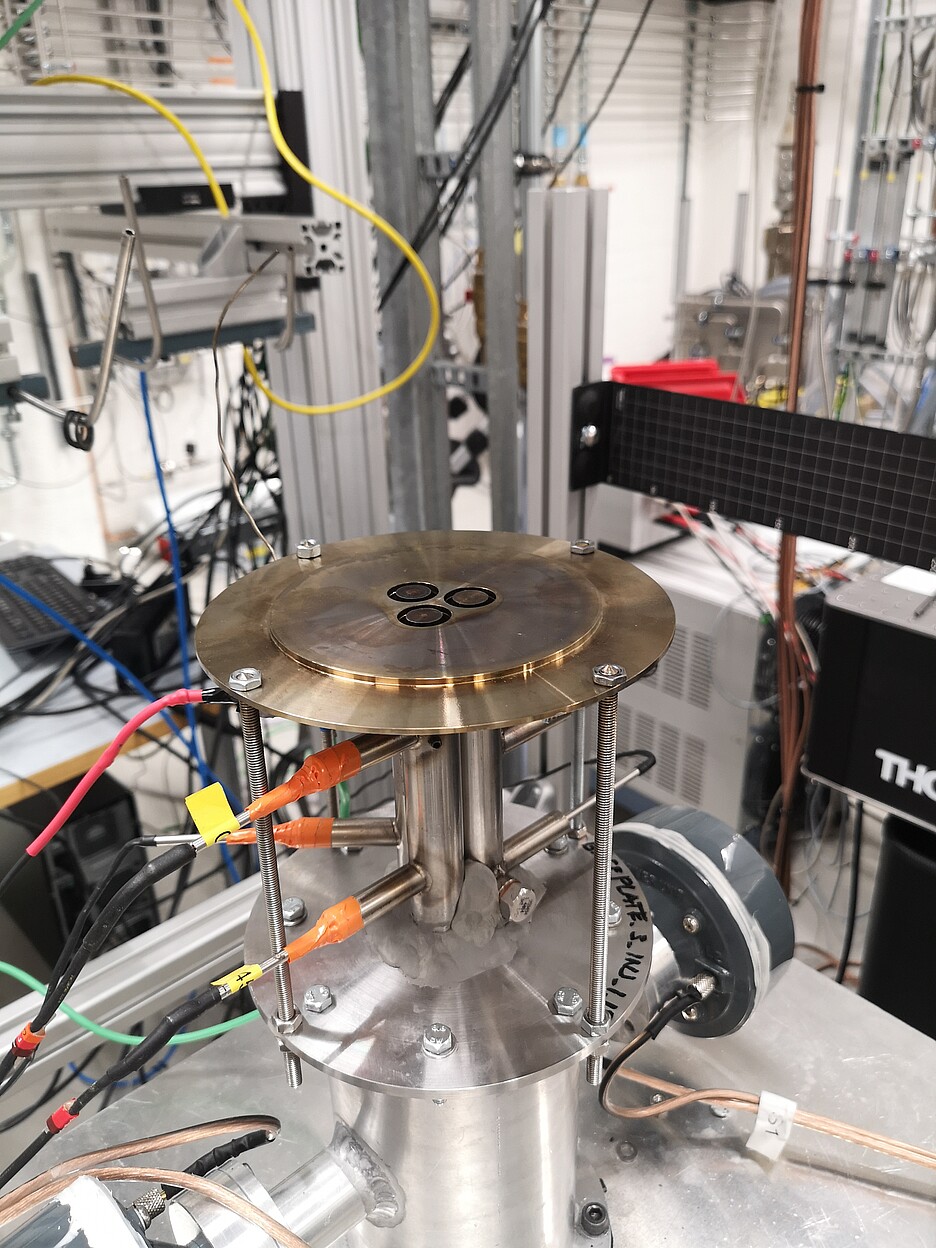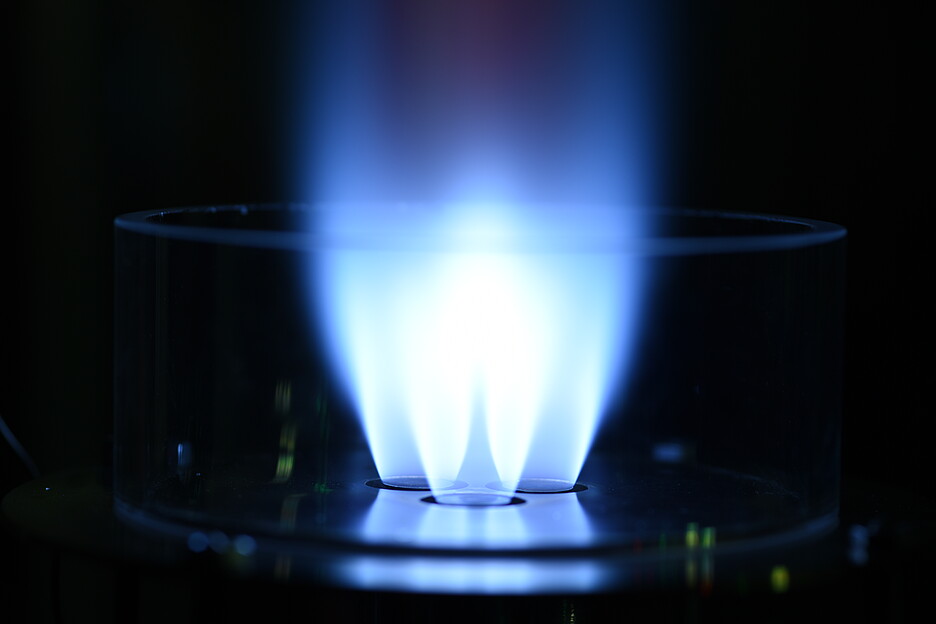
Is hydrogen the new natural gas?
The expansion of renewable energy is resulting in weather-related fluctuations in power production. To date, it has not been possible to reliably compensate for this volatility. Alternative fuels such as hydrogen and ammonia could help in closing gaps in the power supply. Mirko Bothien at the Institute of Energy Systems and Fluid Engineering is researching how this might work.
In the municipality of Birr in the canton of Aargau, an emergency power plant comprising eight mobile gas turbines from the manufacturer General Electric is said to be able to produce 250 megawatts of electricity in the event of an impending power shortage during the winter. The objective is to secure the country’s power supply should an emergency situation arise. An article published in the Aargauer Zeitung states that the turbines can be operated with both gas and oil.
Mirko Bothien, Head of the Distributed Thermal Energy Systems research group at the Institute of Energy Systems and Fluid Engineering (IEFE) of the ZHAW School of Engineering, is currently researching how gas turbines might also play an even more important role in safeguarding the stability of the power grid in the future. However, there are no plans for gas turbines to be used as primary power generators, but rather as aids that can help to compensate for short-term fluctuations in the power grid. These gas turbines are also to be operated using CO₂-neutral – i.e. green – hydrogen or ammonia. “Due to the large-scale expansion of renewable energy systems, we will in future experience increased seasonal fluctuations in power production,” explains Bothien.
The problems with hydrogen

As a result of the massive expansion of solar energy, an oversupply of power is produced during the sunny months of the year. However, the other side of a coin is the power shortfall experienced during the winter when the sun shines less. While a certain amount of power can be stored using batteries, “battery storage tends to be appropriate for short-term and smaller-scale energy output,” explains Bothien. “Larger and long-term quantities of energy are best stored chemically, for example in the form of hydrogen.” The idea of researchers like Mirko Bothien is to now use the surplus power from the summer months to generate hydrogen, which can then be used as fuel for gas turbines. The green energy produced in this way would be available when it is actually needed and could be used to plug gaps in the energy supply during the winter.
“As hydrogen is far more reactive than natural gas, the worst-case scenario could see a flashback occur during the combustion process, leading to the destruction of the burner.”
However, it is in precisely this area, i.e. during the combustion of hydrogen in a gas turbine, that there are many problems to be solved. Firstly, the combustion chamber of a gas turbine would have to be designed differently for hydrogen combustion. “As hydrogen is far more reactive than natural gas, the worst-case scenario could see a flashback occur during the combustion process, leading to the destruction of the burner,” says Bothien in describing the problem. A further consideration is that the combustion of hydrogen leads to an increase in nitrogen oxide emissions, which are extremely harmful to health. The emission limits for nitrogen oxide are correspondingly low, meaning that the volume of this gas being emitted would have to be reduced.
Sound waves could destroy the combustion chamber
There is a third problem, namely the issue of combustion dynamics (also referred to as thermoacoustics), which is also Mirko Bothien’s area of expertise. As the turbulent combustion process creates sounds waves that are reflected by the combustion chamber wall and thus sent colliding into other sound waves, the acoustic waves can be amplified to such a degree that considerable pressure can build up. “The pressure fluctuations resulting from this vicious circle can become so pronounced that the combustion chamber can be destroyed,” explains Mirko Bothien. “This is a huge problem. Not only in turbines, but also in rockets, aircraft engines and even in the boilers of private households. Any space in which a flame is burning,” emphasises Bothien.
As things stand, however, there is still a great deal to learn about the thermoacoustics of lean hydrogen flames, as current research has only been looking at this issue for a relatively short period of time. “What we definitely know is that when hydrogen is burnt, the flame becomes unstable. It is also clear that the methodology for developing stable burners for hydrogen will have to be adjusted compared to that applied for natural gas burners,” Bothien summarises.
Difficulties with hydrogen transport
Mirko Bothien is optimistic about solving the problems that still exist in connection with the combustion of hydrogen. For the ZHAW researcher, the bigger issue that arises when generating power from hydrogen is the question of how to produce and distribute the energy carrier. “We will need enormous quantities of hydrogen in the future if we want to use it to operate large power plants,” Bothien points out. While several projects are underway in Spain, Saudi Arabia and other southern countries in which hydrogen is to be produced using huge solar farms and exported as new natural gas, it will be a long time before we reach a point at which relevant quantities can be transported from there. This is because the transportation process, in particular, remains quite complex. As hydrogen is extremely volatile, it is not suitable for distribution in existing pipelines. Instead, it has to be shipped in tanks or transported in trucks. However, it would be possible to convert it into another carrier medium such as methanol or ammonia, simplifying its transportation in the process.
“As ammonia does not burn well enough, but hydrogen burns too well, we are investigating whether it would be possible to burn a mixture of the two.”
For Switzerland, Mirko Bothien therefore views the decentralised production of hydropower from wind and solar energy directly at smaller power plants and industrial facilities as an initially feasible scenario. Surplus power would then be stored directly on site as hydrogen and fed back into the power grid with the help of a gas turbine as needed. However, just how soon this form of energy storage and generation takes on a relevant role in the energy supply will not only depend on the success of research endeavours: “As always, it is ultimately also a question of money. Nevertheless, it is expected that within the next ten years hydrogen produced from solar or wind energy will be able to compete with natural gas in terms of price,” adds Bothien.
Using the benefits of ammonia
The other energy carrier that can be used to store and feed power back into the grid is the toxic gas ammonia. Mirko Bothien is also researching its use as a power generator: “Here, however, we have the opposite problem to the one we face with hydrogen, namely that ammonia is very difficult to burn,” explains Bothien. A further factor is that to date very little research has been conducted into the combustion dynamics of ammonia. Furthermore, during the combustion of the gas, which comprises nitrogen and hydrogen, additional nitrogen oxide is produced from fuel-bound nitrogen, resulting in increased pollutant emissions – “precisely what you don’t want to have during combustion,” says Bothien. Ammonia is also toxic, a fact that poses additional risks in the event of a tank leak. One benefit that ammonia offers, however, is its global use as a fertiliser, meaning that the necessary distribution infrastructure is already in place.

Both ammonia and hydrogen therefore have advantages and disadvantages when used as a storage medium for power. One solution could be a mixture of the two. “As ammonia does not burn well enough, but hydrogen burns too well, we are investigating whether it would be possible to burn a mixture of the two,” explains Mirko Bothien. As it is also easier to transport ammonia than hydrogen, part of the ammonia could be converted into hydrogen directly at the power plant. This is being researched as part of the “ADONIS” (Ammonia-Hydrogen Combustion in Micro Gas Turbines) project, which was launched in spring and is set to analyse the properties of different ammonia-hydrogen mixing ratios. “The ultimate goal is to offset the disadvantages of both gases,” says Bothien in summing up the project’s objective. Two other projects (one funded by the EU and one by the Swiss Federal Office of Energy) are also aiming to develop gas turbine burners specifically for hydrogen use.
One building block of many
However, for Mirko Bothien, who was employed by energy companies such as Alstom Power and Ansaldo Energia before starting his work at the ZHAW, the chemical storage of energy is just one of several building blocks that need to be explored with the aim of ensuring a secure and clean energy supply. “We also need to look at many other aspects. For example, to what extent power grids have to be designed for this type of energy generation and what other storage options there are, such as batteries and thermal storage systems.” In Mirko Bothien’s view, there is no “holy grail” that will make the energy transition a success. “I am therefore glad that I am able to work with my colleagues here at the IEFE on various solutions that will help to make our energy supply CO₂-neutral,” says Mirko Bothien.
Green or grey hydrogen?
As hydrogen can be obtained using different processes and raw materials, it is classified by colour. Hydrogen, which can be used for storing surplus power, is produced by the so-called electrolysis of water. With the help of electricity, water is turned into hydrogen and oxygen in this process. Hydrogen is referred to as green if the electricity used to produce it comes from renewable energy sources. In addition to green hydrogen, a further classification is grey hydrogen, which in turn is produced using natural gas, coal or crude oil, meaning that CO₂ is emitted during its production. Blue hydrogen is different in that the emitted CO₂ is stored or processed industrially. “Grey hydrogen is still the most common and cheapest form of hydrogen. For the future, however, this is to be replaced by green hydrogen,” explains ZHAW researcher Mirko Bothien.
0 Comments
Be the First to Comment!